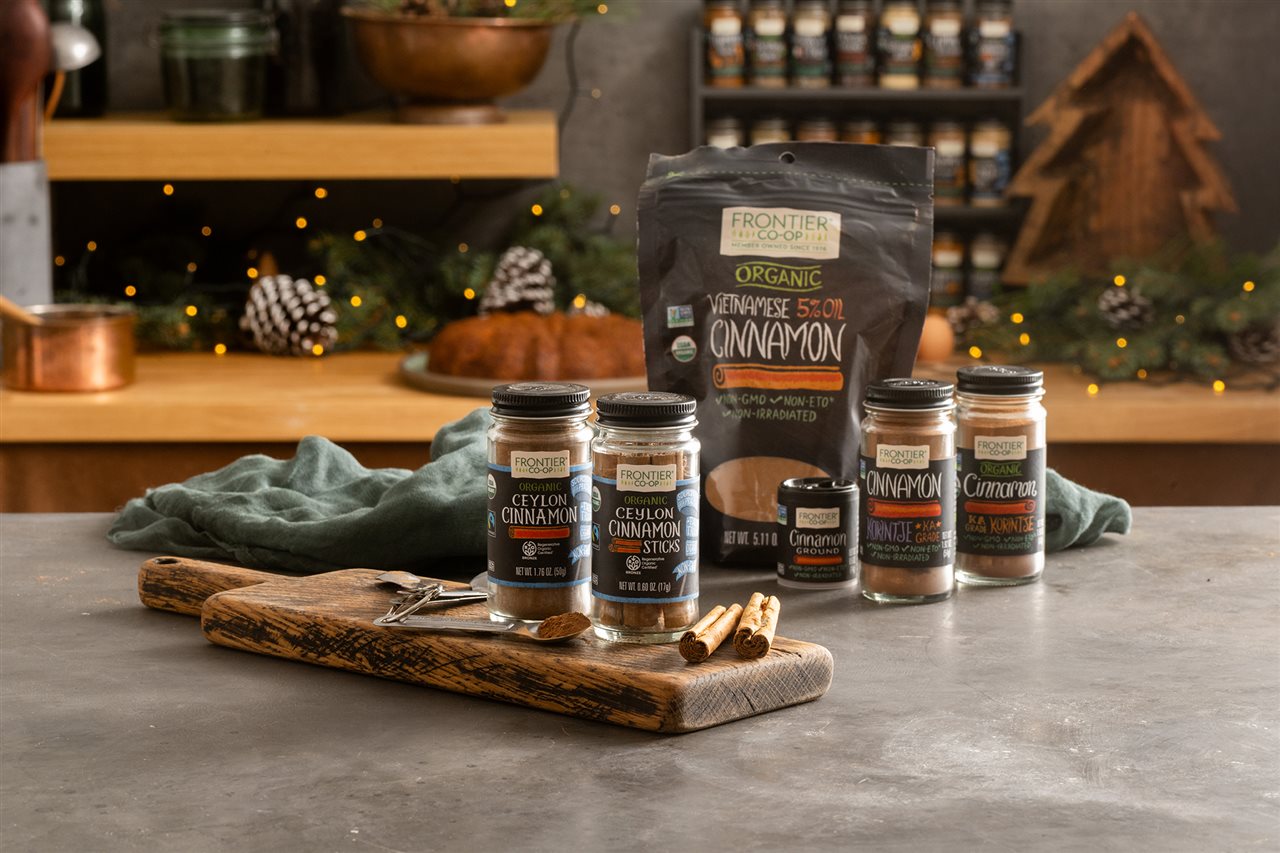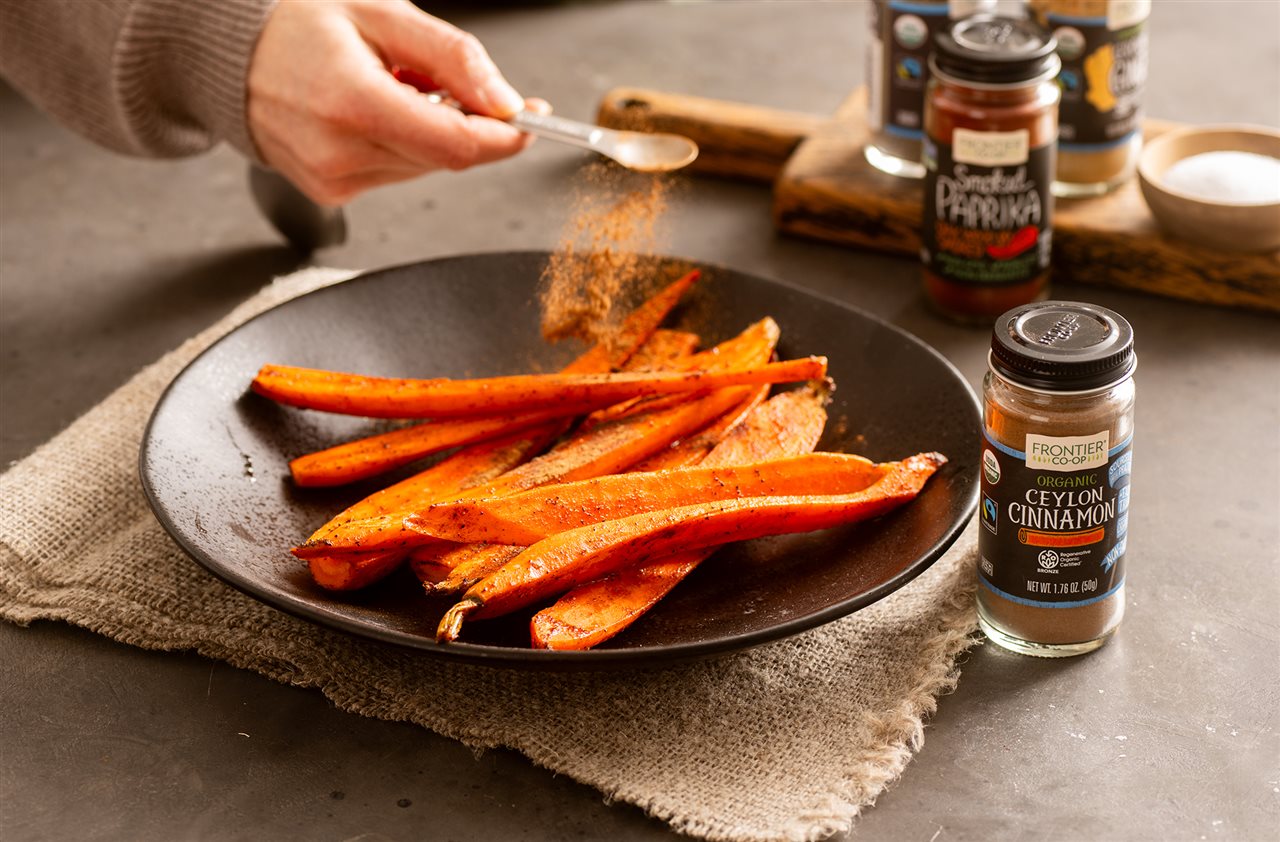For many home cooks, cinnamon seems like a simple staple — an easy addition to oatmeal, toast or cookies. However, a 2025 survey conducted by Suzy, a leading end-to-end market research platform, revealed that about 60% of shoppers don't know where their cinnamon comes from, and 40% mistakenly think all cinnamon is the same.
While most people reach for cinnamon without a second thought, it's worth knowing that there are different types, each with unique characteristics. According to Jennifer Kellison, flavor expert and director of innovation at Frontier Co-op, these distinctions can have an impact on flavor, aroma and wellness benefits.
What is cinnamon, and why does Ceylon matter?
Cinnamon is the dried inner bark of certain tree species that can be ground into a fragrant, flavorful powder. "The type of cinnamon you choose greatly affects its taste, aroma and functional properties," said Kellison. "If you use cinnamon daily, Ceylon cinnamon may be the most desirable choice for a variety of reasons."
Ceylon cinnamon, often called "true cinnamon," is native to the lush, tropical regions of Sri Lanka and parts of India. It comes from the Cinnamomum verum tree, distinguishing it from Cassia cinnamon, which is harvested from related species like Cinnamomum cassia and typically grows in China, Indonesia and Vietnam.
"Ceylon cinnamon is prized for its delicate, sweet and complex flavor, as well as its subtle, refined aroma with citrus and floral undertones," said Kellison. "Its gentle taste is ideal for desserts, beverages and recipes where you want cinnamon to enhance, not overpower, other ingredients. By contrast, Cassia cinnamon is known for its spicy kick and earthy depth that stands out in recipes where a stronger cinnamon presence is needed."

Why is Ceylon cinnamon the gold standard?
The premium difference between Ceylon and Cassia cinnamon is rooted in tradition, rarity and craftsmanship. For centuries, Sri Lankan smallholder farmers have refined the art of cultivating and processing Ceylon cinnamon. Harvesting is a meticulous, manual process: skilled workers carefully peel away the outer bark to reveal the soft inner bark, then hand-roll it into delicate quills that are dried to a golden hue. On the other hand, Cassia cinnamon's thicker bark is well-suited for automated processing, making it more widely available and affordable. As a result, Cassia cinnamon may have a rougher texture compared to the more intricate layers that are prized in Ceylon cinnamon.
Because Ceylon cinnamon is less common and requires artisanal methods to produce, it's a premium choice for those seeking the finest quality. "At Frontier Co-op, we're also proud to offer Ceylon cinnamon with certifications like Regenerative Organic Certified® and Fairtrade Certified," said Kellison. "These certifications help ensure that the skilled farmers who grow cinnamon are supported with fair wages, safe working conditions and resources to implement environmentally friendly practices."
Unlocking the full potential of Ceylon cinnamon
According to the Suzy survey, the majority of home cooks typically use cinnamon in baked goods and breakfast foods, but flavor experts at Frontier Co-op say Ceylon cinnamon can be part of your day from morning to night.
"Ceylon cinnamon isn't just for sweets. It works wonders in savory dishes, too," said Jay Cousin, research and development lead at Frontier Co-op. "Try adding a pinch of Ceylon cinnamon to roasted vegetables, curries or even homemade salad dressings. The subtle citrus notes lift and balance the dish, making every bite more interesting."

Whole cinnamon sticks or ground?
Choosing between ground or whole Ceylon cinnamon depends on your cooking style.
"Ground Ceylon cinnamon is perfect for when you need convenience and quick mixing," said Cousin. "It has a fine texture that blends well into batters, beverages and other spice mixes."
Whole Ceylon cinnamon sticks are best for infusing flavor slowly. "Use whole Ceylon cinnamon sticks in simmering dishes, like curries, stews, mulled wine or poaching liquids," said Cousin. "The sticks can be removed easily after cooking, leaving behind a delicate, aromatic essence without unwanted grit."
If you don't know how quickly you'll use up your cinnamon, you can buy whole sticks and grind them fresh in a spice grinder or with a mortar and pestle. To preserve the delicate flavor and aroma, experts recommend storing your cinnamon in an airtight container, away from heat, moisture and direct sunlight — ideally in a pantry or drawer.
Check out FrontierCoop.com for more tips and inspiration on using Ceylon cinnamon.
Survey Methodology: Suzy conducted a custom survey in September 2025, among a sample of 1,075 U.S. adults 23-70 years of age



